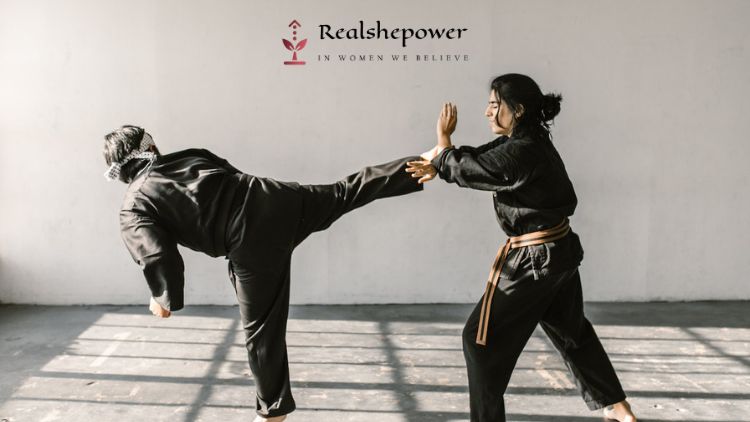10 Basic self-defense skills that our children must learn


Self-defense is an important skill for everyone, regardless of gender. Here are ten tactics that can be helpful in self-defense situations:
Table of Contents
1. Being aware of our surroundings:
Teach your kids the basic self-defense skill of being aware of our surroundings. They should always look for potential dangers or threats.
2. Trust your instincts:
Tell them, if something or someone makes them feel uncomfortable, they should trust their instincts and take action to protect themselves.
3. Use your voice:
This one is especially important. Children or young adults or even us (parents) must always use our voice in self-defense. This is to say, we must shout, scream, or call for help to attract attention and deter an attacker.
4. Use physical self-defense techniques:
There are many physical self-defense techniques that can be effective in deterring an attacker, such as strikes to vulnerable areas like the eyes, throat, or groin.
5. Use objects as weapons:
If you don’t have any other weapons available, you can use everyday objects as improvised weapons, such as keys, pens, or bottles.
6. Escape as quickly as possible:
Remind your children that the best possible way out of a dangerous situation is to escape it. They should look out for ways to escape the situation as quickly as possible and get to a safe place.
7. Stay calm and focused:
It seems a little unrealistic to expect young adults or children to maintain their composure given that we adults frequently lose our anger or become frightened in unexpected situations. However, we must help our children and ourselves in learning to control our emotions if we are to become proactive and prioritise the safety of our children. Even in challenging situations, our kids must understand that their minds will function at their peak and they will be able to escape if they maintain their composure and focus.
The secret to making clear decisions and taking action that works is to remain calm.
8. Use basic self-defense moves:
Basic self-defense moves can be very helpful in a time of crisis, as they can provide a means of protecting yourself and getting to safety. Self-defense moves are designed to help you deter or escape from an attacker.
Some basic self-defense moves that may be helpful in a crisis situation include:
- Palm heel strike: This move involves striking an attacker with the heel of your palm, targeting vulnerable areas such as the nose, throat, or solar plexus.
- Elbow strike: This move involves using the sharp point of your elbow to strike an attacker, targeting vulnerable areas such as the side of the neck, the temple, or the ribcage.
- Knee strike: This move involves using your knee to strike an attacker in vulnerable areas such as the groin or the stomach.
- Front kick: This move involves using the front of your foot to kick an attacker, targeting vulnerable areas such as the stomach or the groin.
- Side kick: This move involves using the side of your foot to kick an attacker, targeting vulnerable areas such as the knee or the side of the body.
Caution: It is important to remember that self-defense moves should only be used as a last resort when you are in immediate danger and have no other options available. If you are able to escape the situation or get to a safe place, you should do so as quickly as possible.
It is also important to note that self-defense moves should not be used to cause harm or injury to another person. The primary goal of self-defense is to protect yourself and get to safety, not to engage in a physical altercation.
9. Use your body weight:
Using your body weight against an attacker can be an effective self-defense technique, as it can allow you to use your size and strength to your advantage. Here are some ways you can use your body weight in a self-defense situation:
- Use your weight to push or shove an attacker away: If an attacker is coming towards you, you can use your body weight to push or shove them away, creating distance between you and the attacker.
- Use your weight to knock an attacker off balance: If an attacker is close to you, you can use your body weight to push against them, knocking them off balance and making it harder for them to maintain their footing.
- Use your weight to pin an attacker down: If you are able to get on top of an attacker, you can use your body weight to hold them down and prevent them from moving or attacking you.
- Use your weight to escape a hold: If an attacker has a hold on you, you can use your body weight to push against them and create enough leverage to escape their grasp.
Caution: It is important to remember that using your body weight in a self-defense situation should only be done as a last resort when you are in immediate danger and have no other options available. If you are able to escape the situation or get to a safe place, you should do so as quickly as possible.
It is also important to note that self-defense techniques should not be used to cause harm or injury to another person. The primary goal of self-defense is to protect yourself and get to safety, not to engage in a physical altercation.
10. Practice regularly:
The more you practice self-defense techniques, the more likely you are to remember and utilize them in a real-life situation.
You can now write for RSP Magazine and be a part of the community. Share your stories and opinions with us here.
